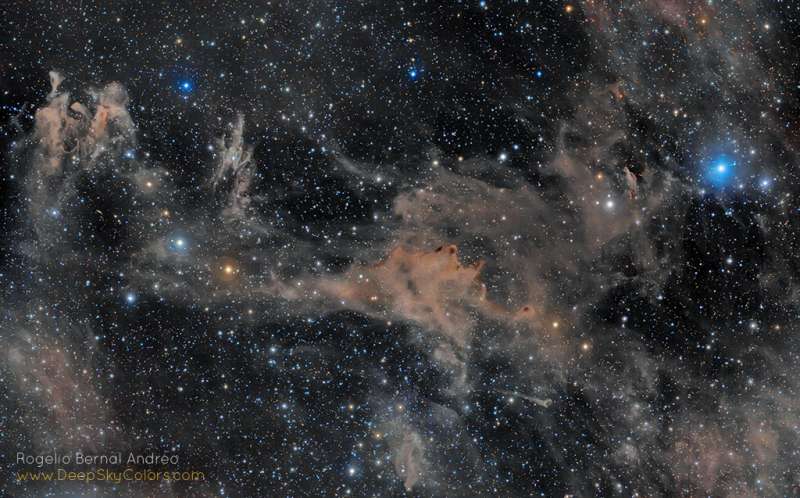Credit & Copyright: Rogelio Bernal
Andreo (Deep Sky Colors)
Explanation:
This composition in
stardust
covers over 8 degrees on the northern sky.
The mosaicked field of view is west of the familiar Pleiades star cluster,
toward the zodiacal
constellation
Aries and the plane of our
Milky Way Galaxy.
At right in the deep skyscape is bluish Epsilon Arietis,
a star visible to the naked-eye and about 330 light-years away.
Reflecting starlight in the region,
dusty nebulae
LBN762, LBN753, and LBN743 sprawl
left to right
across the field, but are likely some 1,000 light-years away.
At that estimated distance, the cosmic canvas is over 140 light-years across.
Near the edge of a large
molecular
cloud, their dark interiors can hide newly
formed stars and young stellar objects
or protostars from prying optical telescopes.
Collapsing due to
self-gravity, the
protostars
form around dense cores embedded in the molecular cloud.
1999 2000 2001 2002 2003 2004 2005 2006 2007 2008 2009 2010 2011 2012 2013 2014 2015 2016 2017 2018 2019 2020 2021 2022 2023 2024 2025 |
Январь Февраль Март Апрель Май Июнь Июль Август Сентябрь Октябрь Ноябрь Декабрь |
NASA Web Site Statements, Warnings, and Disclaimers
NASA Official: Jay Norris. Specific rights apply.
A service of: LHEA at NASA / GSFC
& Michigan Tech. U.
|
Публикации с ключевыми словами:
reflection nebula - dust - пыль - Пылевая туманность
Публикации со словами: reflection nebula - dust - пыль - Пылевая туманность | |
См. также:
Все публикации на ту же тему >> | |
